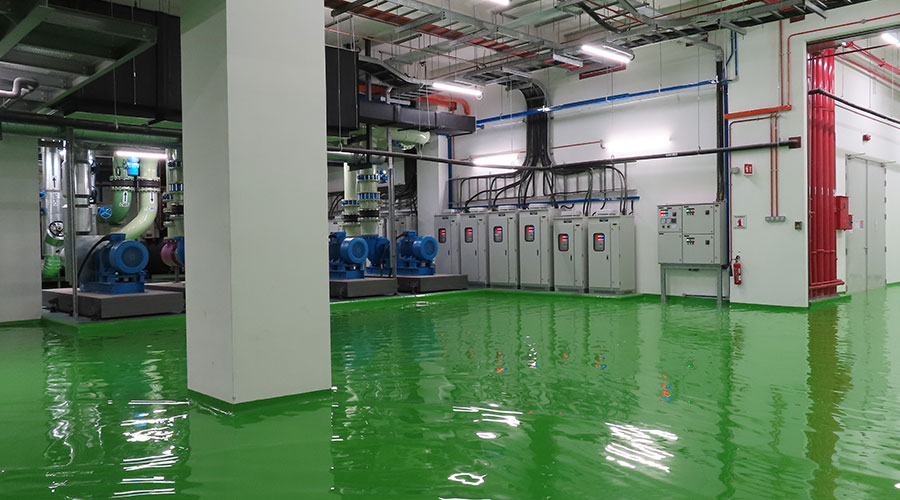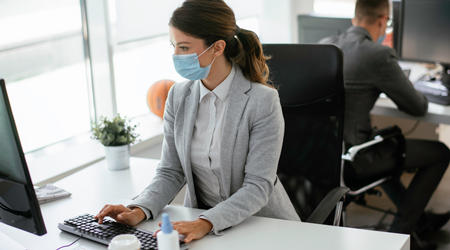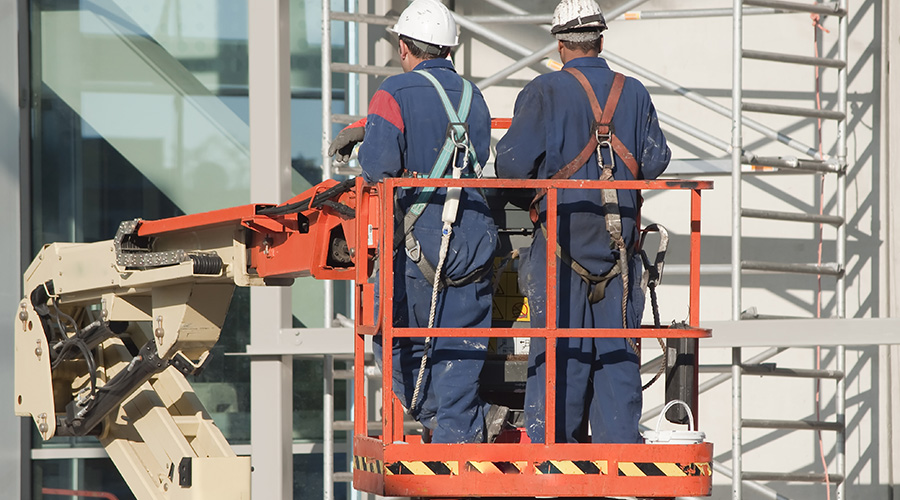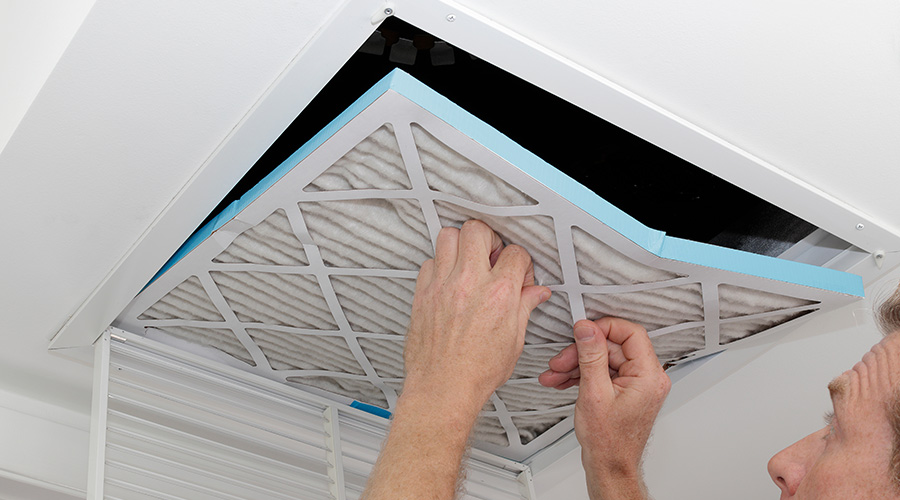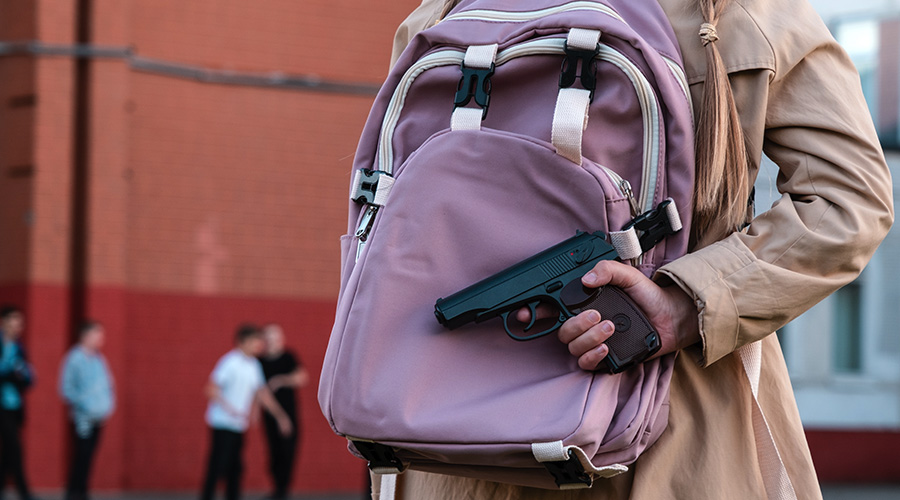Proactively Protect Your Office From the Next Pandemic
From touchless restrooms to UV-C lighting, follow these best practices to ensure the health and safety of your building occupants.
By K.J. Jacobs and Elisa Walker
Despite the fact that we now know most office jobs can be done remotely, we also know more and more workers are ready to go back to the office – at least part time. While some people enjoy working from home, others thrive on the community and collaboration that’s fostered in an office environment.
Newer members of the workforce are especially ready to receive the training and in-person mentorship they’ve missed out on for the last year, but facility managers will need to take a wide range of precautions in order to create a safe work environment that minimizes the risk of spreading pathogens, such as COVID-19.
By introducing the following safety measures before the next pandemic hits (which experts predict will keep coming with increasing frequency), you can reduce the impact on your workforce and productivity.
Clean Air is a Must
Keeping offices safe from airborne diseases starts with the air itself. There are a number of ways to ensure building occupants are receiving steady supplies of safe, fresh air.
1. Constant Airflow Dilutes Particle Concentrations
Because COVID-19 and other diseases like influenza are transmitted through the air, it makes sense to invest in robust air sanitizing systems to ensure fresh, clean air is continually delivered into the office. However, this can be achieved without heavy spending, depending on the climate and factors such as temperature and humidity. During appropriate weather conditions, the CDC recommends opening windows to introduce outdoor air, which reduces the concentration of particles indoors.
In small rooms and offices, a single-direction airflow that constantly brings fresh air into a room can be maintained by placing low exhaust vents. In general, the more fresh air you can introduce into (and exhaust out of) a room, the more you dilute the concentration of particles within that space, thereby reducing the chances of occupants inhaling aerosol particles containing pathogens.
2. Air Filtration
HEPA filtration systems can aid in decontaminating air from within HVAC systems. The fine mesh filters remove contaminants from circulation as air passes through them.
Depending on the size and configuration of an existing HVAC system, however, external filtration compartments that accommodate a larger surface area of a fine HEPA filter may need to be retrofitted to maintain the proper airflow volume through the tight mesh.
MERV 13 filters with MERV 8 pre-filters can also be used alone or in conjunction with HEPA filters because they reduce the small particles that carry the COVID-19 virus.
3. UV-C Light
All ultraviolet (UV) light spectrums have an antimicrobial effect, killing both viruses and bacteria, but UV-C is the most effective spectrum for this application. Depending on the intensity of the lights, rooms outfitted with UV-C lights can reach maximum sterilization in 25 to 60 minutes. This time can be reduced if the rooms are painted with UV-reflective paint.
However, UV-C light can also cause eye irritation and skin burns, so it’s not suitable for use while a space is occupied. In an office setting, it could be utilized to clean conference rooms between meetings or in staff lounge and lunch areas overnight. UV-C light can speed up the degradation of certain materials, however, so materials that have proven UV stability should be used in these spaces.
UV-C lamps can also be concealed directly within HVAC ductwork and air handlers to sterilize air before it’s introduced into occupied spaces as an effective air sanitation measure.
4. Bipolar Ionization
Bipolar ionization is an air-cleaning technology that works by producing positively and negatively charged oxygen ions that then interact with and catalyze oxidation and degradation in bacteria, mold cells and viruses. As the charges of the particles naturally group together into heavier clusters, they are more likely to be caught by filters, or fall faster out of the air and onto surfaces where they can be cleaned.
In addition to helping remove the threat of bacteria and viruses, bipolar ionizers have the added benefit of removing mold from the air — an unfortunately common environmental hazard that thrives on common building materials and in dark, damp environments.
5. Surface Selection
Keeping office workers safe also depends heavily on the surfaces within the office environment. Ideal materials have inherent antimicrobial properties, are nonporous and easy to quickly clean with a diluted bleach solution.
Durability to Cleaning Solutions
Office surfaces and materials should be selected based on their durability to stand up to frequent cleanings with harsh cleaning agents, such as a diluted bleach solution. Hard, non-porous surfaces, such as plastic laminates and simulated stone are preferable. Porous materials like wood provide a microscopic environment for bacteria to grow and multiply, especially as finishing coats break down over time or from regular exposure to harsh cleaning agents.
Materials that can’t withstand repeated exposure to harsh cleaning agents can deteriorate over time and create a micro-environment for germs and contaminants to collect, reducing the life of the product and the effectiveness of the cleaning regime.
Non-woven fabrics such as vinyl, silicone, and polyurethane that are cleanable with bleach and manufactured with a moisture barrier are good textile options due to their durability.
Restrooms
Antimicrobial and nonporous materials should be incorporated wherever possible in restrooms, especially on door hardware and high-touch plumbing fixtures.
Motion-activated or hands-free applications aid in minimizing cross-contact and should be installed on:
- Soap and hand sanitizer dispensers
- Paper towel dispensers
- Door-openers and kick plates
However, automatic sinks are a commonly seen hands-free fixture that actually discourages proper hygiene. Due to the delayed on/off mechanism and hit-or-miss motion sensors, users often get frustrated and wash their hands for less than the recommended 20 seconds.
Touchless toilets are another automatic fixture that should be approached with caution. The addition of automation and sensors to an otherwise simple and straightforward plumbing system may create unnecessary long-term maintenance issues. Consider installing foot-pedals to flush toilets, instead. They are a more intuitive way for users to minimize cross-contact, operate mechanically and are much simpler to maintain.
Office Layout
For offices that have lobbies or other waiting areas, consider reducing the size of these spaces or eliminating them altogether in favor of digital or mobile check-in concierge services so visitors can enter and go straight to their destination. A receptionist can still be present and assist visitors when needed, but they wouldn’t interact closely or for long periods of time with guests.
Circulation patterns that encourage one-way travel and minimize cross-contact to maintain social distancing should be identified and clearly marked, so that even people who are unfamiliar with the office layout can navigate it intuitively.
Consider incorporating modular furnishings that can be easily modified or rearranged by facility managers or even by building users. This can aid in changing the office layout to support social distancing measures quickly, without the need for outside vendors or general contractors. Rolling dividers and flexible fixtures with multiple functions create opportunities to use furniture to direct traffic, create distance, or segment large rooms into smaller spaces without costly structural renovations.
By incorporating some of the recommendations above, we have a great opportunity to take the lessons and experiences gained from the last year under the COVID-19 pandemic and enact a proactive approach to creating a safe and welcoming office environment.
K.J. Jacobs is a principal and director of the corporate office studio at McMillan Pazdan Smith, a regional, studio-based architecture, planning and interior design firm.
Elisa Walker is the lead interior designer in the education and library studios at McMillan Pazdan Smith, a regional, studio-based architecture, planning and interior design firm.
Related Topics:






